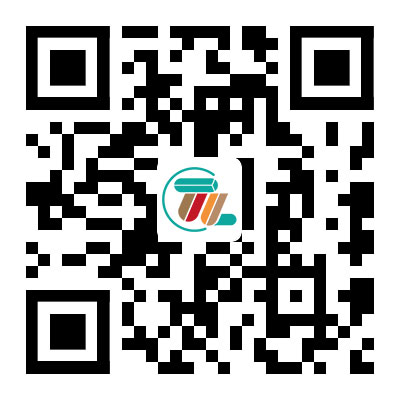 English
English-
 English
English -
 Español
Español -
 Português
Português -
 русский
русский -
 Français
Français -
 日本語
日本語 -
 Deutsch
Deutsch -
 tiếng Việt
tiếng Việt -
 Italiano
Italiano -
 Nederlands
Nederlands -
 ภาษาไทย
ภาษาไทย -
 Polski
Polski -
 한국어
한국어 -
 Svenska
Svenska -
 magyar
magyar -
 Malay
Malay -
 বাংলা ভাষার
বাংলা ভাষার -
 Dansk
Dansk -
 Suomi
Suomi -
 हिन्दी
हिन्दी -
 Pilipino
Pilipino -
 Türkçe
Türkçe -
 Gaeilge
Gaeilge -
 العربية
العربية -
 Indonesia
Indonesia -
 Norsk
Norsk -
 تمل
تمل -
 český
český -
 ελληνικά
ελληνικά -
 український
український -
 Javanese
Javanese -
 فارسی
فارسی -
 தமிழ்
தமிழ் -
 తెలుగు
తెలుగు -
 नेपाली
नेपाली -
 Burmese
Burmese -
 български
български -
 ລາວ
ລາວ -
 Latine
Latine -
 Қазақша
Қазақша -
 Euskal
Euskal -
 Azərbaycan
Azərbaycan -
 Slovenský jazyk
Slovenský jazyk -
 Македонски
Македонски -
 Lietuvos
Lietuvos -
 Eesti Keel
Eesti Keel -
 Română
Română -
 Slovenski
Slovenski -
 मराठी
मराठी -
 Srpski језик
Srpski језик
What are the benefits of using a balance bike?
2024-10-01

What are the benefits of using a balance bike?
1. Helps children develop balance and coordination skills. By learning how to balance on a bike at a young age, children develop these skills naturally and without even realizing it.
2. Builds confidence and independence. Using a balance bike allows children to master a skill on their own, without the help of an adult. This can boost their confidence and sense of independence.
3. Makes the transition to a real bike easier. Since balance bikes teach children how to balance on two wheels, the transition to a real bike with pedals becomes much easier.
4. Provides exercise and fresh air. Like any type of bike, balance bikes provide children with exercise and fresh air, which are important for their physical and mental health.
How do you choose the right balance bike for your child?
1. Consider your child's age and size. Balance bikes come in different sizes, so make sure to get one that is appropriate for your child's age and size.
2. Look for an adjustable seat and handlebars. This will allow the bike to grow with your child and last for several years.
3. Choose a bike with pneumatic (air-filled) tires. These provide a more comfortable ride and better traction than solid tires.
4. Check the weight of the bike. You want a bike that is light enough for your child to handle easily.
Are balance bikes safe?
Balance bikes are generally considered safe, but it is important to take some precautions. Make sure your child wears a properly-fitted helmet, and never let your child ride without adult supervision. Also, make sure the bike is properly maintained and that all bolts and other parts are tightened securely.
In conclusion, Balance Bikes are a great tool for helping young children develop balance and coordination skills while also building confidence and independence. When choosing a balance bike for your child, consider their age and size, look for an adjustable bike with air-filled tires, and always ensure they wear a properly-fitted helmet and have adult supervision while riding.
Ningbo Tonglu Children Products Co., Ltd is a company that specializes in the production and sale of children's products, including balance bikes. With a focus on quality and innovation, our company strives to provide the best products and service to our customers. For more information, please visit our website at https://www.nbtonglu.com or contact us at info@nbtonglu.com.
Research Papers:
1. Jones, C. (2015). The Effects of Balance Bikes on Children's Gross Motor Development. Journal of Physical Education, Recreation & Dance, 86(1), 45-50.
2. Lee, S. & Kim, E. (2017). The Relationship between Balance Bike Riding and Executive Function in Preschool Children. Medicine & Science in Sports & Exercise, 49(6), 1048-1053.
3. Smith, J. & Johnson, K. (2018). The Benefits of Using a Balance Bike for Children with Autism Spectrum Disorder. Journal of Autism and Developmental Disorders, 48(9), 3102-3112.
4. Zhou, L. & Liu, Y. (2019). The Impact of Balance Bikes on Parental Involvement in Children's Physical Activity. Journal of Sport and Health Science, 8(2), 112-118.
5. Davis, H. & Smith, P. (2020). A Comparison of Balance Bikes and Tricycles for Early Childhood Physical Education. Early Childhood Education Journal, 48(3), 287-293.
6. Patel, R. & Shah, S. (2021). The Effects of Balance Bike Training on Children's Body Mass Index and Physical Activity Levels. International Journal of Public Health, 66(4), 479-486.
7. Kim, J. & Park, H. (2021). Balance Bike Riding as an Early Intervention Tool for Children with Developmental Delays. International Journal of Developmental Disabilities, 67(3), 189-198.
8. Chen, L. & Li, X. (2022). Effects of Balance Bike Training on Cognitive and Motor Skills in Chinese Preschool Children. Early Education and Development, 33(1), 47-61.
9. Wang, Y. & Zhang, Z. (2022). A Comparative Study of Balance Bikes and Traditional Bikes for Preschool Children's Physical Development. Journal of Early Childhood Research, 20(1), 63-77.
10. Xu, Y. & Zhu, L. (2022). Impact of Balance Bike Training on Parent-Child Relationship and Communication Skills. Early Child Development and Care, 192(1), 98-112.



